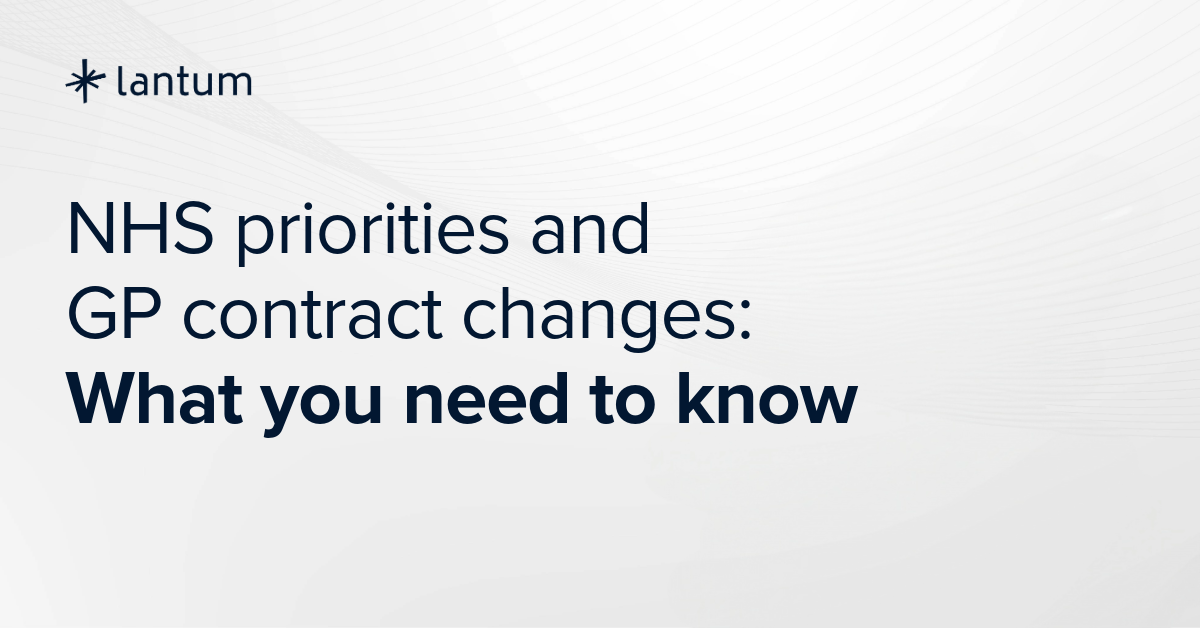NHS long term plan, NHS Funding, GP Contract
NHS priorities and GP contract changes: What you need to know
NHS England has outlined the key focus areas for 2024/25, along with some important changes to the GP contract. The goals? To cut bureaucracy, improve financial flexibility for practices, and help PCNs boost staffing flexibility and patient access.
Dr Ishani Patel, co-founder of Lantum and GP, has broken down the key changes you need to be aware of.
3 key focus areas
- Enhanced Access services: Two years since a more standardised approach to extended access services was introduced, they are still high on the priority list. Many PCNs may take the chance to review their service provision and how it is run this year – if that’s you, here’s a checklist of items you may want to consider.
- Integrated Neighbourhood Teams: NHS England recommends PCNs continue working with local partners to forge closer links between practices and broader commnunity health and care systems. The main driver is establishing INTs.
- Women’s Health Hubs: To align with goals of the Women’s Health Strategy, every ICB is expected to mobilise its first Women’s Health Hub, operating to the minimum standards, by July 2024.
The right workforce management platform and partner, like Lantum, can support PCNs and ICBs in setting up specialist hubs and mobilising the workforce, helping to effectively and efficiently meet these directives.
5 key contract changes
1. Suspending and income-protecting 32 out of 76 Quality and Outcomes Framework (QOF) indicators
These changes are supposed to streamline administration for practices and give clarity and confidence around cashflow, as some indicators will automatically be paid at the same level as last year. The QOF aspiration payment threshold will also be increased from 70% to 80% in 2024/25.
2. Consolidating Investment and Impact (IIF) indicators from five to two
This is another measure intended to reduce the administrative burden on practices. The retired indicators relate to flu and access, while the remaining indicators will be health checks for people with a learning disability and the use of FIT testing in cancer referral pathways.
The funding from the retired indicators will be redirected into the Capacity and Access Payment (CAP), as described below.
3. Initiation of Capacity and Access Improvement Payment (CAIP) at any time of the year, upon confirmation of PCNs meeting simple criteria
CAP funding will increase by £46 million to £292 million, achieved by retiring three IIF indicators as described above. To improve cashflow, 30% of this budget will be distributed to PCNs through CAIP, with monthly instalments once specific criteria are met.
The rest will be disbursed to PCNs without conditions, based on their adjusted population, in 12 equal payments.
4. Broadening the ARRS scheme, and removing constraints where feasible
To give greater flexibility in staffing, more roles will be reimbursable under the ARRS scheme. Enhanced practice nurses will now be eligible, and there will be more funding options for mental health practitioners.
Caps on all other direct patient care roles will be removed, and PCNs will be able to access reimbursement for time those roles spend on training and apprenticeships.
5. Simplifying DES requirements to help practices and PCNs enhance outcomes and improve patient access experiences
With an additional £44 million earmarked for the PCN DES, ICBs can determine how they want to evolve services and measure them, ensuring patients can access care when and where they need it.
A broad scope means initiatives can be tailored at the local level.
Looking for support to make your budget go further and meet these directives?
At Lantum, our teams have supported PCNs and ICBs in setting up and sustaining over 250+ Extended Access Hubs, and we’re already working with partners on a wide variety of community health initiatives. Our workforce management platform empowers you to:
- Seamlessly set-up and staff services with rotas connected to a multi-disciplinary, ICB-wide staff bank
- Get a full picture of your live staffing levels across multiple sites
- Build workforce resilience and respond to change with a network of vetted clinicians ready to work across your ICB
Find out more about how Lantum can help.



